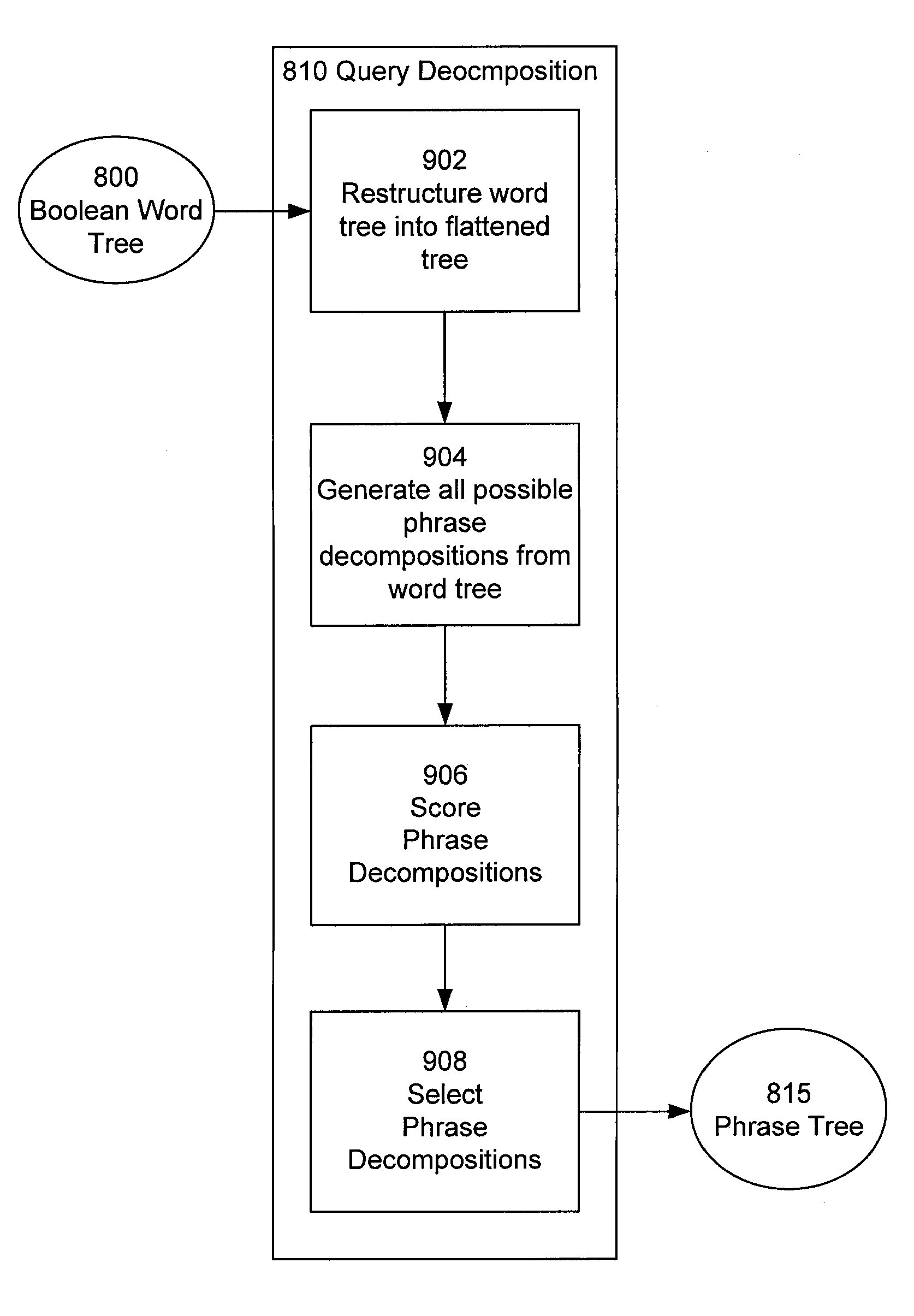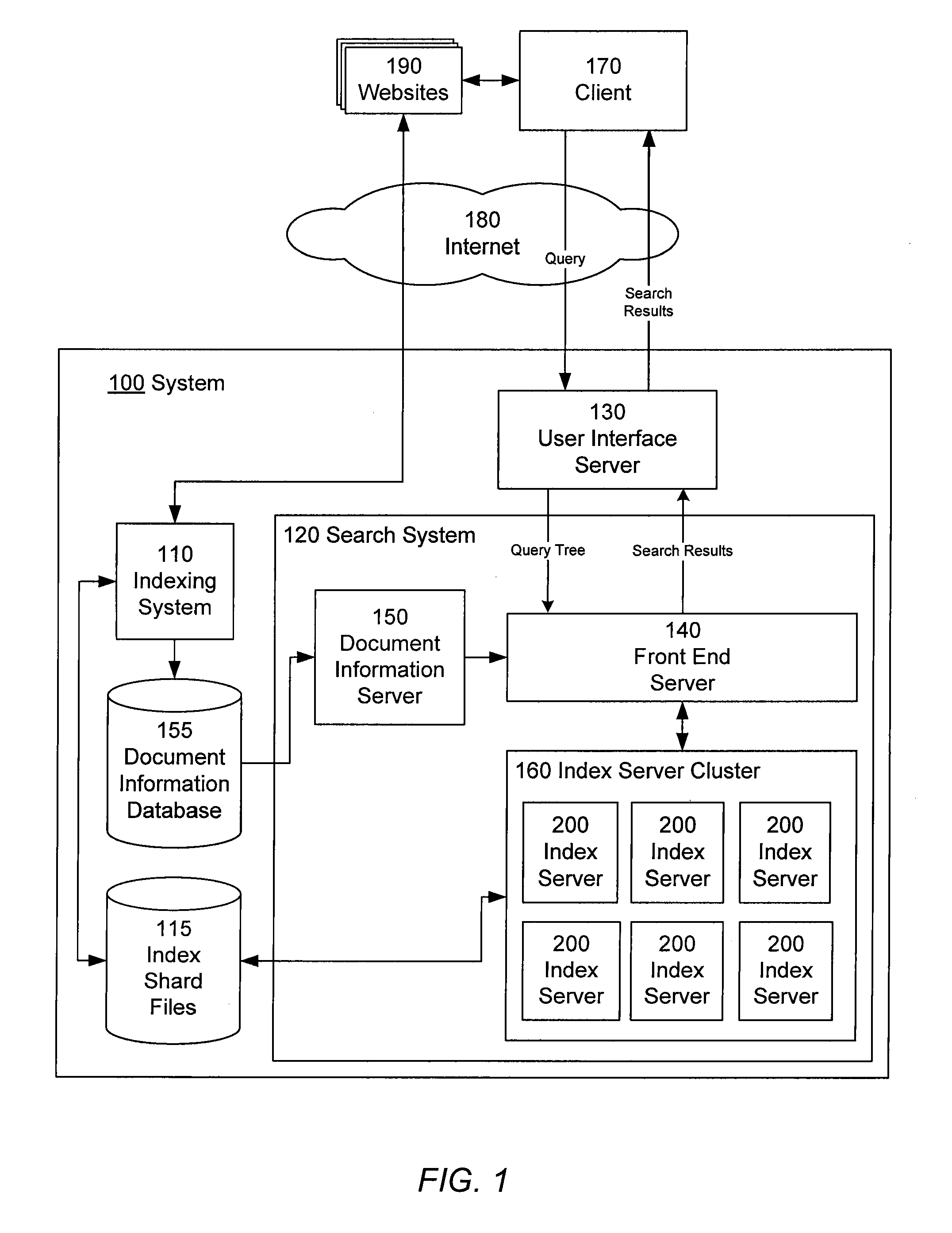Query phrasification
a query and phrasing technology, applied in the field of information retrieval systems, can solve the problems of not typically capturing topical relationships, phrases entering and leaving the lexicon in terms of usage, and the direct “boolean” matching of query terms has well known limitations, so as to improve query processing efficiency and reduce storage requirements for phrase posting lists
- Summary
- Abstract
- Description
- Claims
- Application Information
AI Technical Summary
Benefits of technology
Problems solved by technology
Method used
Image
Examples
example 1
[0074]
Phrase Map Table(Word sequence,Wordlocation, position,ParsedBuffer Contentslength)Comment-empty- indicatestext break, but buffer is empty so no hit occurs.TheThequickThe quickbrownThe quick brownfoxThe quick brown fox-empty-“The quick brown indicates fox”, title, “exact”, 4text break. Buffer cleared.TheThequickThe quickbrownThe quick brownfoxThe quick brown foxjumpsThe quick brown fox “The quick brown foxBuffer full.jumpsjumps”, body, initial, 5overquick brown fox “quick brown foxBuffer full.jumps overjumps over”, body,medial, 5Thebrown fox jumps “brown fox jumpsBuffer fullover theover the”, body,medial, 5lazyfox jumps over the “fox jumps over theBuffer fulllazylazy”, body, medial, 5godjumps over the lazy “jumps over the lazyBuffer full.godgod”, body, medial, 5.-empty-“over the lazy god”,“.” indicates textbody, final, 4break.
[0075]After processing the document, the phrase map table contains a set of word sequences, each a string with between two and N words, along with additio...
PUM
 Login to View More
Login to View More Abstract
Description
Claims
Application Information
 Login to View More
Login to View More - R&D
- Intellectual Property
- Life Sciences
- Materials
- Tech Scout
- Unparalleled Data Quality
- Higher Quality Content
- 60% Fewer Hallucinations
Browse by: Latest US Patents, China's latest patents, Technical Efficacy Thesaurus, Application Domain, Technology Topic, Popular Technical Reports.
© 2025 PatSnap. All rights reserved.Legal|Privacy policy|Modern Slavery Act Transparency Statement|Sitemap|About US| Contact US: help@patsnap.com



